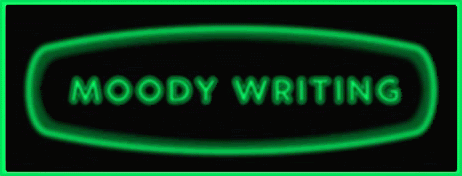There are stories where you start in the middle of things and keep
going. In the case of thrillers and books that are part of a series the reader
doesn’t really need an explanation of what’s going on, they’ll work it out on
the fly.
In most cases, though, readers prefer to get an idea of characters and
setting before things really take off. The inciting incident that propels the
main character into adventure may not occur for several chapters.
When you’re trying to establish the world so the reader has an idea of
who they’re going to be following for the next few hundred pages the approach is
often to show ordinary life, important relationships, interests and activities.
And this can be quite dull.
It achieves the goal of showing us life before things get crazy and
helps us get to know the characters, but that doesn’t necessarily make it very
interesting.
There are ways to make getting out of bed and going to work interesting
for the reader—you can use humour, minor conflicts, everyday issues—but one
approach worth considering is to start with the subplot.
You can start with a short revelatory scene that shows us who the character
is, but if it does that and is never referred to again it will feel a bit
tacked on, and more importantly it’s a missed opportunity. It’s not that it’s
bad, it’s just that you could do so much more with it.
If what happens in the first scene, even though it isn’t directly
connected to the main storyline, has a continuing impact on the character in
the story, then not only will it have helped ease the reader into the story,
but it will add complexity and depth to the story as a whole.
Let’s say the story is about a Karen who discovers her husband is
having an affair, and she goes off to travel around the wine regions of Italy
to rediscover herself and in doing so falls in love etc. You don’t really want
to start the story with her walking in on her husband in flagrante delicto. It would
be a bit of a jarring way to start the story.
So let’s say we start with our heroine visiting her sister and they’re
talking about men. The sister is jealous of the solid reliable husband Karen
has, and in turn Karen is a bit jealous of her sister’s freedom to do what she
wants. Assuming this is an entertaining scene that lets us get to know our main
character and shows her to be fun and interesting, when she goes home and finds
hubby in bed with the neighbour, readers will feel for her and then follow her
into the rest of the story.
That first scene with the sister will have done its job and need never
be mentioned again. And in many stories I read that’s the sort of thing that
happens.
However, if you know what your story is going to be about, what the
themes and issues will be, you can use that first scene to your advantage.
For example, if the first scene was Karen visiting her sister who’s
just given birth and is having a hard time coping, and Karen feels relieved
that both her and her husband are career-minded and glad she never had kids,
you can still provide readers with a way to get to know the main character.
But after she discovers the infidelity and goes off to Italy, maybe the
man she meets has kids. Later on maybe she meets up with her sister now in full
mummy-mode and it makes her reassess her own feelings about kids.
The point is, because the first scene is thematically linked to the
main story it’s possible to develop it into more than a one-off scene, and in
doing so add to the main story.
If you found this post useful, please give it a retweet. Cheers.








































































































19 comments:
Something in the first scene has an impact throughout the book - I did that better with my second book with a character that is part of a subplot. (And he does impact the main character.)
I have a tendency to do this, though I would class your example more as character development than a true subplot..
good post.
I think anything can be interesting if the character has captured the interest of the reader. That's the real goal (I think) in writing fiction.
@Alex-once things start working together the whole story lifts off the page.
@marykate - all plot is character development.
@Mike - it also helps to have one interesting thing lead into the next.
What an immensely practical tip! Thank you. I've gotten reasonably good at cramming backstory unobtrusively into the "in medias res" story, but I hadn't thought to use subplot before.
-S
A very helpful tip. Getting the beginnings right is so important.
Great advice. I think I did this accidentally, but it could certainly use some tweaking--will definitely keep this in mind when I rewrite.
Hmm, I had never thought of using a subplot that early on in the novel, but yes I think it could work - great tip. Thanks.
I agree that, what we show in the first scene has to have importance somewhere in the book/story, else it will look like we have tacked it on. Great tip, Mooderino.
@Sisterhood - you're very welcome.
@Lynda - cheers.
@sarah - most of writing comes naturally, i think. Just when things aren't working that it helps to have a look at it.
@Wordfoolery - yvw
@Rachna - makes the story more fun too.
I have the darnedest time nailing the beginnings. I have to rewrite them a lot, especially after I reach the end. I like to have a beginning that entices and hints at the end. I'm still learning how to do that well.
I recently read a book (The Blade by Joe Moore and Lynn Sholes) and it started with a weaving of three plots, two of which were subplots but elemental to the story. It was a great way to begin the book and kept me reading and wondering how they were all going to tie together (which they did!). Great post, as always.
a fairly classic device in cop stories is to have a subplot that appears largely irrelevant but ends up being central to solving the main mystery.
There is something about the neatness of having everything tie up together that really appeals, even if at times you can see it coming!
@C. Lee - doing the start after you've done the end is the best way to do it, I think.
@Julie - it feels rewarding when things come together and frustrating when they don't (I've read a few like that — annoying).
Hugh howey should check the whole thing carefully and only they he will accept. Check this source to get our better service for your essay and check verb.
When you look into that year you will find that there has variation on the genre.If you go to this site then click this link here now then you will get the text changer tool.
The main motivations comes from the own personality and own thought.You need to check here http://www.rewriters.biz/service-that-knows-how-to-rewrite-text-online/ so that you will know how they work on text rewriting service.
Starting with this phase of the better field you can find your target more good. cover the link of this area with http://www.bestcapstoneprojects.com/only-the-best-senior-capstone-project-ideas/ and enjoy the best details of your work here. You can also get more moody writing themes here.
If you have interest in those cases, you can share your ideas with the rest of the world and this can be seen only here because people do not care about the rights of others.